
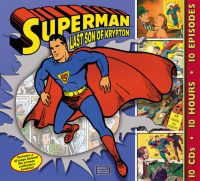 The Adventures of Superman (1940-1951) aired “The Diamond of Death” on December 17, 1949 as the 68th episode of its Mutual run in the 1949 season (all of which from February to December save one were of the half hour variety as opposed to the many multi-part, 15-minute serials that ran through most of the 1940s). Since we’ve showcased only five other episodes of this program (the last being in September of 2022) I felt it would be helpful for newcomers to this fun adventure series if I reprised the generic background information that preceded those other episodes.
The Adventures of Superman (1940-1951) aired “The Diamond of Death” on December 17, 1949 as the 68th episode of its Mutual run in the 1949 season (all of which from February to December save one were of the half hour variety as opposed to the many multi-part, 15-minute serials that ran through most of the 1940s). Since we’ve showcased only five other episodes of this program (the last being in September of 2022) I felt it would be helpful for newcomers to this fun adventure series if I reprised the generic background information that preceded those other episodes.
[The linked CD at top includes “The Diamond of Death.”]
The Superman character, created by Jerry Siegel and Joe Shuster, first appeared in Action Comics #1, dated June 1938. That superhero strip in the comic was one of several strips in that now famous first issue, but turned out to be popular enough that a newspaper comic strip debuted in 1939. It also proved immensely popular, popular enough that a stand alone comic book was spun off and added to the ever-growing franchise, with the now iconic title of Superman #1, with a cover date of Summer 1939 (cover below left).
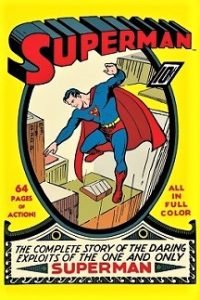 But the comic strip and magazine were only the beginning for the Man of Steel. Things were moving quickly, and as Wikipedia explains: “The serial came to radio as a syndicated show on New York City’s WOR on February 12, 1940. On Mutual, it was broadcast from August 31, 1942, to February 4, 1949, as a 15-minute serial, running three or, usually, five times a week. From February 7 to June 24, 1949, it ran as a thrice-weekly half-hour show. The series shifted to ABC Saturday evenings on October 29, 1949, and then returned to afternoons twice a week on June 5, 1950, continuing on ABC until March 1, 1951. In all, 2,088 original episodes of The Adventures of Superman aired on American radio.” Wikipedia also notes that many of the elements that have become staples of Superman’s fictional world were first introduced in the radio show, among them kryptonite, Daily Planet editor Perry White, copy boy (later cub reporter) Jimmy Olsen, and police inspector Bill Henderson. Also worthy of mention is the first meeting between Superman and Batman (and Robin) which took place in the March 2, 1945 episode.
But the comic strip and magazine were only the beginning for the Man of Steel. Things were moving quickly, and as Wikipedia explains: “The serial came to radio as a syndicated show on New York City’s WOR on February 12, 1940. On Mutual, it was broadcast from August 31, 1942, to February 4, 1949, as a 15-minute serial, running three or, usually, five times a week. From February 7 to June 24, 1949, it ran as a thrice-weekly half-hour show. The series shifted to ABC Saturday evenings on October 29, 1949, and then returned to afternoons twice a week on June 5, 1950, continuing on ABC until March 1, 1951. In all, 2,088 original episodes of The Adventures of Superman aired on American radio.” Wikipedia also notes that many of the elements that have become staples of Superman’s fictional world were first introduced in the radio show, among them kryptonite, Daily Planet editor Perry White, copy boy (later cub reporter) Jimmy Olsen, and police inspector Bill Henderson. Also worthy of mention is the first meeting between Superman and Batman (and Robin) which took place in the March 2, 1945 episode.
Bud Collyer (1908-1969, photo top right) was the voice of Clark Kent and Superman on radio, lowering his voice slightly when speaking as the Man of Steel. He is arguably best known, however, as the host of the popular television game shows of the 1950s, Beat the Clock and To Tell the Truth.
Joan Alexander (1915-2009, birth name Louise Abrass) played the spunky Lois Lane character for more than one thousand episodes of the program’s 11-year run.
From 1940-47 Jack Kelk (1923-2002) would play Jimmy Olsen, and from 1948-1950 it was Jack Grimes (1926-2009) who would play Jimmy Olsen. An interesting bit of trivia concerning Grimes is that though he was an old man of 22 when he began playing Jimmy Olsen, by the age of 12 he was acting in 35-40 radio shows a week. Grimes also worked in film and television in later years. A film of note in which he appeared was 1945’s noir crime film Lady on a Train (starring Deanna Durbin and Ralph Bellamy), based on the Leslie Charteris story. His television work included roles in Tom Corbett, Space Cadet, Maude, and All in the Family.
(Left: Joan Alexander – Center: Jack Kelk – Right: Jack Grimes)


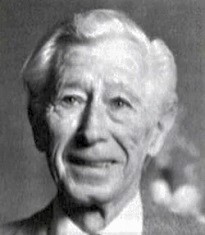
“The Diamond of Death” finds Lois on what one would take to be a seemingly harmless photo spread of a local event of interest, the type normally found in the Arts & Entertainment section of any Sunday newspaper, in this case the Daily Planet. This event is the coming-of-age 21st birthday party of one Alice Fairmount, she of the prominent Fairmount clan, whose large gabled mansion is situated atop a hill outside of Metropolis. The occasion is of special note because the young woman of the hour is to be bequeathed the famous Fairmount diamond as a gift. Prior to the official celebration an attempted theft of the diamond is thwarted and the wheels of a dandy mystery are set in motion. Along the way there are murders, changes of direction as clues to the escaped wannabe cat burglar either lead to dead ends or in a direction no one expected. And while the bulk of the story is of the mystery/detective nature (as many of these radio adventures are for the Man of Steel), where he ends up helping to save the day through the use of one or more of his super powers, this episode is no different. In all honesty I must reveal that while the mystery is a good one and well-enough plotted to hold listener interest, I cannot suspend my disbelief enough to buy the reason Superman gives Lois near the end for his not being Clark Kent. If this sounds confusing, I dare not reveal more and suggest only that you give a listen to this otherwise clever little murder mystery to learn the truth behind “The Diamond of Death.”
Play Time: 29:54
{“The Diamond of Death” aired on a Saturday evening, so the neighborhood gang could hardly wait to hit the nearby newsstand after church the next day. Superman always helped solve the mystery in his adventures using many of the techniques of the detectives they read about in their favorite detective pulps, so mystery/detective pulps were the order of the day in late December of 1949, hardly a week before Christmas. Black Book Detective (1933-53) was a fairly standard detective pulp until it introduced the character of the Black Bat in 1939. He would appear in more than half of the magazine’s stories from that point forward, and as the history of the magazine tells us was responsible in great part for the magazine lasting well into the early 1950s, when many another detective pulp had long since disappeared from newsstands. After seeing its first 3 issues as bimonthlies in 1949, its last 2 were quarterly for a total of 5 issues in 1949. Detective Mystery Novel (1935-51) would go through a total of 5 title changes during its 88 issue life, settling on its final title with the Summer 1948 issue. Though a quarterly in 1949, for some reason it missed its Summer issue, for a total of 3 issues in 1949. Super-Detective (1934-35, 1940-1950) began—as one source observed—as a fairly standard pulp “despite rather lurid covers.” It folded after a mere 15 issues and was resurrected in 1940. Never hewing to any set schedule for any appreciable measure of time, its 4 1949 issues split between a quarterly and bi-monthly schedule for a total of 4 issues in 1949.}
[Left: Black Book Det., Fall/49 – Center: Detective Mystery, Fall/49 – Right: Super-Detective, 12/49]
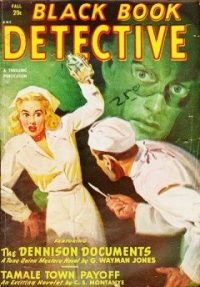
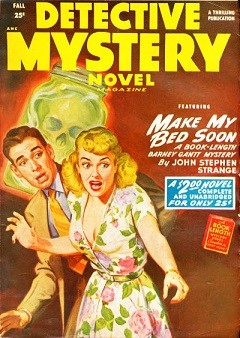
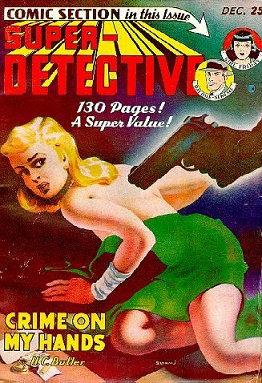
To view the entire list of weekly Old Time Radio episodes at Tangent Online, click here.